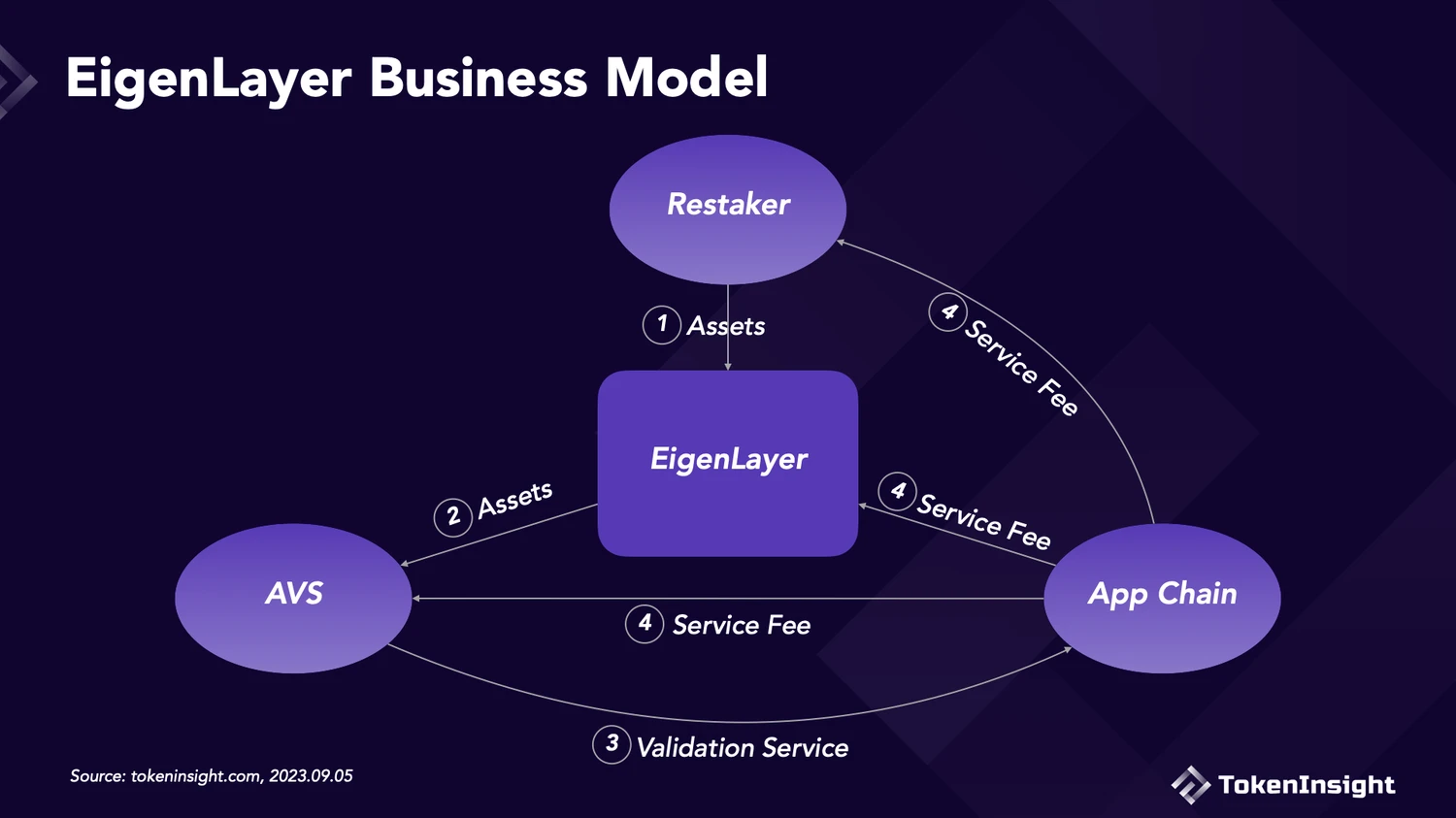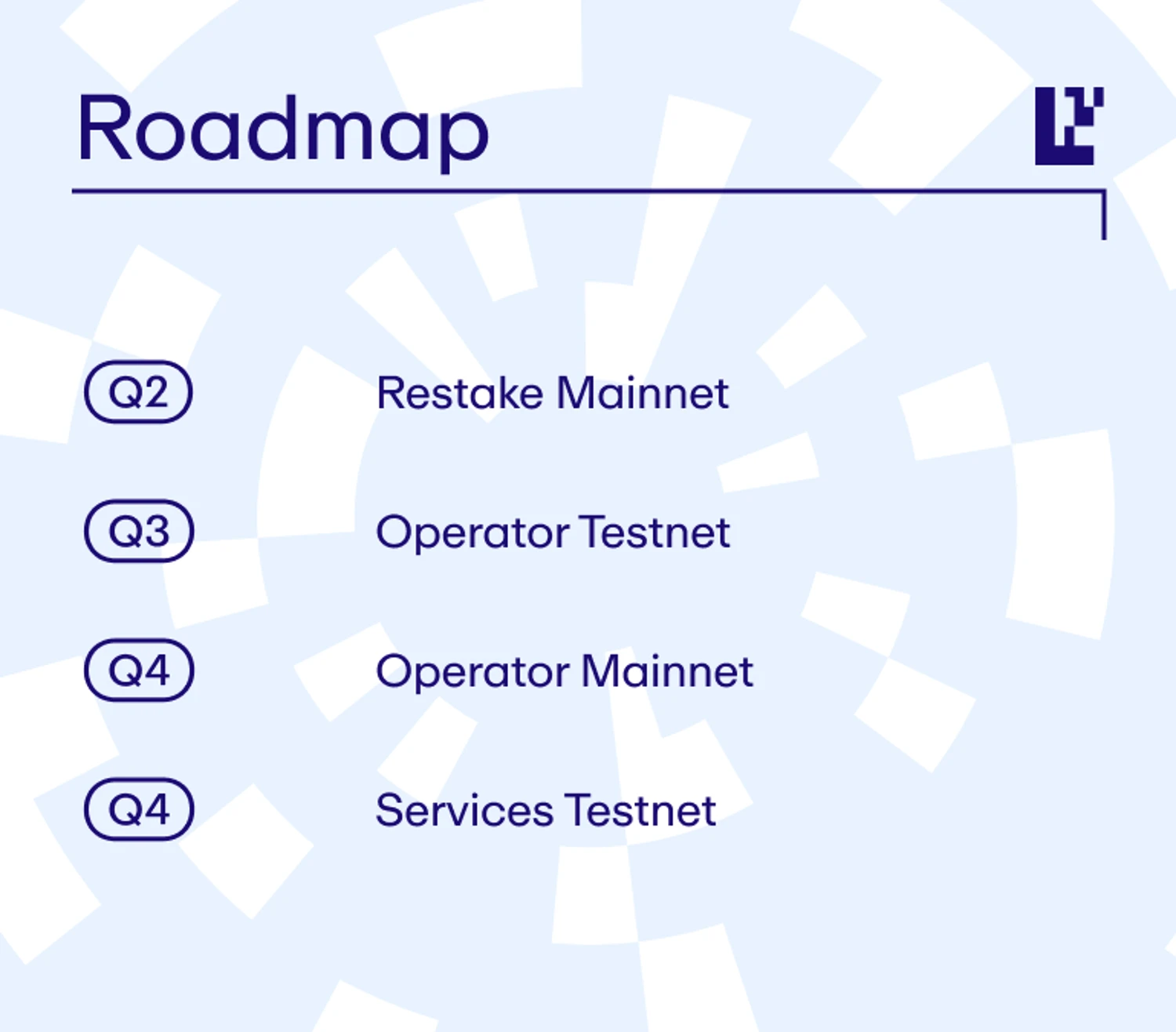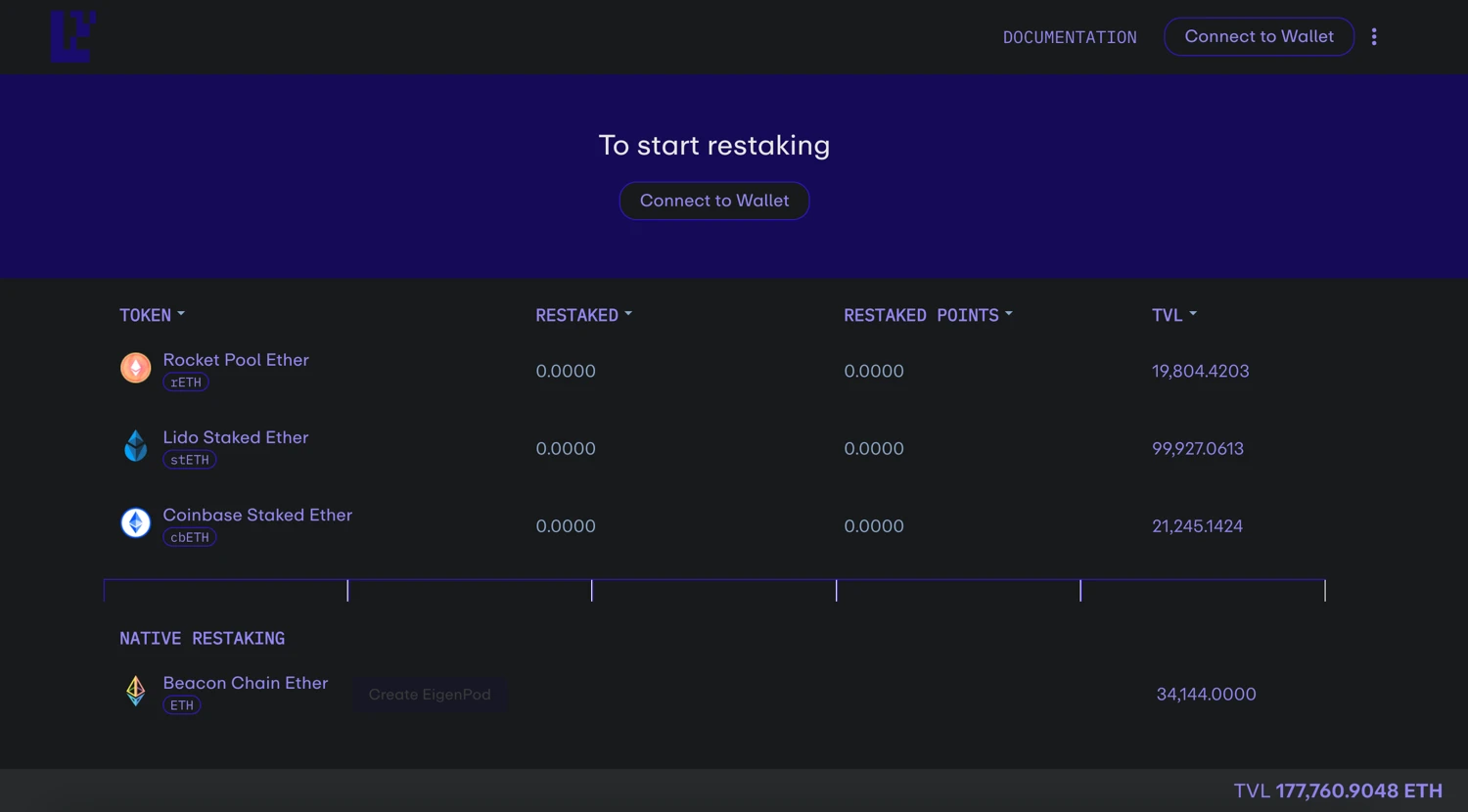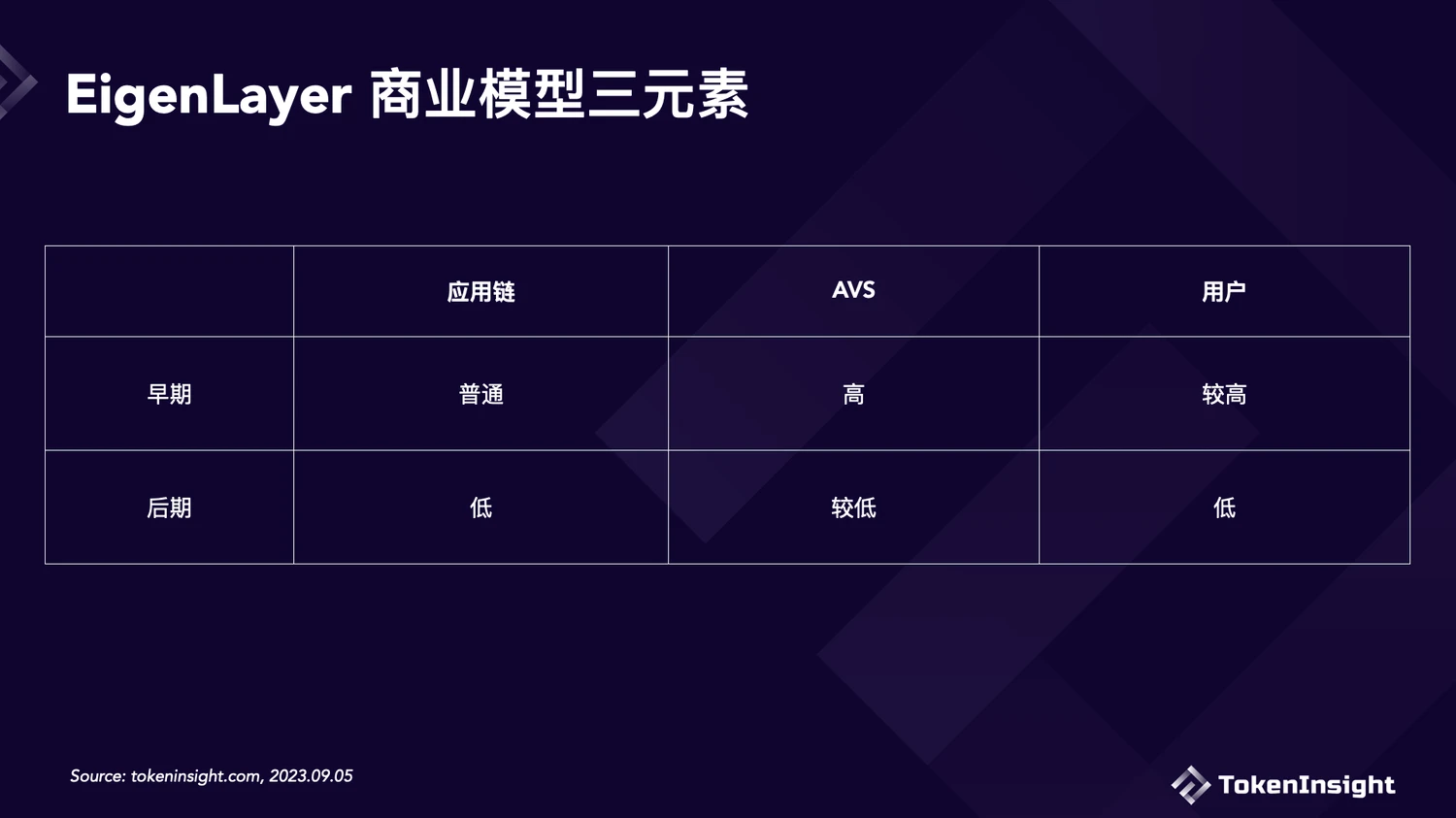There have been a lot of discussions about EigenLayer recently. Most of them focus on the re-staking mechanism of EigenLayer and the shared security of Ethereum. However, there is little analysis on the overall business model of EigenLayer. So how does EigenLayer's business model work? Will there be anyone using EigenLayer? Can it be profitable? Let's find out.
TL;DR
We have conducted in-depth research on EigenLayer's business model. After studying the relevant data and information, we have reached the following conclusions:
There won't be many potential users (i.e., small to medium-sized application chains) attracted to EigenLayer, and there is a high likelihood that the number will gradually decrease in the future.
In the early stage, the main suppliers of EigenLayer's services, AVS (i.e., node operators), are likely to be attracted due to the potential revenue. However, considering the associated security risks, the overall adoption of AVS is not optimistic.
Although there are currently some users staking assets on EigenLayer, the potential for increasing the user base is limited.
EigenLayer is generally overvalued. In the long run, its business model cannot achieve sustainable profitability after people's novelty wears off.
What is EigenLayer
EigenLayer is a Restaking protocol based on Ethereum. It can be seen as an intermediary platform connecting stakers, AVS, and application chains.
Stakers, also known as Restakers, are users staking assets on EigenLayer.
AVS, Actively Validated Services, is a security service protocol integrated into EigenLayer, which can be simply understood as node operators.
Application chains are small to medium-sized blockchain networks that require node validation.
The main role of EigenLayer is to act as a platform connecting these three entities. It can:
Provide stakers with a way to restake and earn additional staking rewards
Provide collateral assets for AVS
Provide the opportunity for application chains to choose AVS and purchase verification services
What is EigenLayer's business model?
EigenLayer's business model is built around stakeholders, AVS, and application chains. If we understand it from the perspective of demand and supply:


EigenLayer supply-demand relationship
EigenLayer's business model operates as follows:
Users stake LSD in EigenLayer.
The staked assets will be provided to AVS for protection.
AVS provides verification services to application chains.
Application chains pay service fees. The fees will be divided into three parts, distributed as stake rewards, service income, and protocol revenue to the stakeholders, AVS, and EigenLayer.


EigenLayer Business Model
Can EigenLayer's business model be profitable?
From the overall business model perspective, EigenLayer's main customer base is small and medium-sized blockchain networks with node verification needs. Its main implementation is to provide verification services to non-EVM compatible blockchain networks using Ethereum node operators.
In the entire business chain, whether it is stakers, AVS, or EigenLayer's income, it is provided by these small and medium-sized application chains. Therefore, if we want to judge whether EigenLayer's business model can be profitable, the first issue to discuss is whether there will be application chains using EigenLayer.
Will there be application chains using EigenLayer?
Firstly, there are two fundamental reasons why EigenLayer attracts non-EVM compatible small and medium-sized application chains as its main customer base:
Cost
Non-EVM compatible small and medium-sized application chains need to establish their own trust network and ensure network security by deploying dedicated nodes. However, the cost of deploying their own nodes is high, which is a burden for small and medium-sized blockchain networks. Therefore, they have a demand to seek third-party node operators to provide more cost-effective verification services. The integrated AVS in EigenLayer can provide these application chains with a more cost-effective verification services market.
Security
For non-EVM compatible small and medium-sized application chains, having security comparable to Ethereum is very attractive. EigenLayer claims that it can use LSD as collateral to provide these blockchains with the same level of security as Ethereum. This undoubtedly touches the pain points of these application chains.
From the cost perspective, EigenLayer can indeed meet the needs of small and medium-sized application chains to reduce node deployment costs. However, in terms of security, we believe that EigenLayer cannot "rent" the security of Ethereum and provide these application chains with security on the same level as Ethereum.
In terms of the collateral mechanism, EigenLayer primarily uses LSD as collateral to provide protection for AVS. However, this does not mean that AVS's verification service can provide the same level of security as Ethereum. Ethereum's strong security is provided by its large number of nodes and the amount of ETH staked. It has over 10,000 nodes and a stake of 25 million ETH. Therefore, its network is highly secure. On the other hand, the number of nodes and the amount of collateral purchased from EigenLayer by application chains are not at the same level as Ethereum. Therefore, EigenLayer cannot meet the security requirements of the clients.
Furthermore, in terms of sustainability, small and medium-sized application chains will not use EigenLayer for a long time. In the early stages of development, these application chains may choose to purchase AVS services from EigenLayer due to cost considerations. However, in the later stages of development and after issuing their own native tokens, the application chains are likely to switch to using native tokens as collateral assets and establish their own secure networks. This is inevitable for the development of blockchain networks.
Therefore, for the above reasons, EigenLayer will not attract a large number of clients and is likely to gradually decrease in the future.
Will AVS be integrated into EigenLayer?
For the supply side, the revenue obtained from application chains is an important reason for AVS to join EigenLayer.
Essentially, AVS integrated into EigenLayer is actually making extra money. They are essentially taking on additional verification work on top of completing Ethereum's verification work. So how much income can these additional verification tasks bring them?
If we refer to the data from Lido Finance, the revenue that AVS can earn from joining EigenLayer is estimated to be between 5% and 10% of the service fee. Lido charges a fee of 10%, which is divided between node operators and Lido itself. 5% of the fee is allocated to node operators. However, since EigenLayer is in the early stages of development, it is likely to implement incentives and allocate a higher proportion to AVS to attract their participation.
However, although EigenLayer brings additional revenue to these node operators, the additional verification work also increases the security risks for the validating nodes. Regarding this point, Vitalik Buterin has also expressed the same opinion. He believes that the behavior of using Ethereum node operators to verify other blockchain networks, such as EigenLayer, will overload the consensus of the entire Ethereum network. The restaking mechanism will amplify the risks, thereby affecting the overall security of the network.
Therefore, we believe that early adoption of AVS is highly likely due to the attracted revenue. However, considering the associated security risks, the overall adoption of AVS is not optimistic. In other words, the additional income obtained from the application link may not be sufficient to compensate for the potential losses.
Will there be users staking assets on EigenLayer
The main reason for users choosing to stake assets on EigenLayer is the focus on the staking rewards offered by Restaking and potential airdrop rewards in the future.
According to the roadmap released by EigenLayer here, EigenLayer is currently in the first phase: Restake Mainnet, which only opens the platform's restaking feature. Node staking based on LSD and AVS services have not been launched yet. In other words, currently users can only deposit assets into EigenLayer without any staking rewards. And for a long time in the future, before the Service phase is launched, users will not receive substantial staking rewards.


However, according to the data from EigenLayer's official website, there are quite a few users currently staking assets on EigenLayer. Within two months of the mainnet staking feature being launched, the total staked amount on EigenLayer has exceeded 177K ETH. This is largely because users hope to become early supporters of the project and obtain potential airdrop rewards in the future. However, this pie-in-the-sky approach to attracting users can only attract a large number of naive users with money in the early stage, and it will start to lose momentum afterwards. After all, users cannot obtain any substantial returns in the short term. This is the most fatal problem.


EigenLayer Restake Official Website Interface
In addition, from a long-term perspective, LSD asset holders can find node operators to stake assets on their own. There is no need to go through EigenLayer. EigenLayer is nothing more than eliminating the step of users searching for information and providing them with a platform to connect with node operators. Therefore, unless the staking rewards provided by EigenLayer are high enough, it cannot attract too many users to continuously stake assets on its platform.
Therefore, we believe that although many users are staking assets on EigenLayer currently, there is not much room for an increase in the number of users in the future.
Concluding Remarks
Overall, for EigenLayer, the application chain, AVS, and users are all indispensable.


Analysis of EigenLayer's Business Model Three Elements
From the perspective of major demand-side application chains, EigenLayer can indeed meet the cost reduction needs of small to medium-sized application chains, but it cannot meet the security requirements. At the same time, the sustainability of application chain requirements is also poor.
From the perspective of the major supply-side AVS, early AVS is likely to be attracted to enter due to revenue. However, the security disadvantages brought by the Restaking mechanism may to some extent affect the settlement of AVS.
From the perspective of users, users cannot obtain any substantial staking rewards in the short term, and the uncertainty of staking rewards may affect the subsequent increase in the number of users.
Therefore, we believe that EigenLayer, as the trump card project of Restaking, has been "mythified" and overestimated. Its business model is not sufficient to achieve sustainable profitability after people's novelty wears off.










